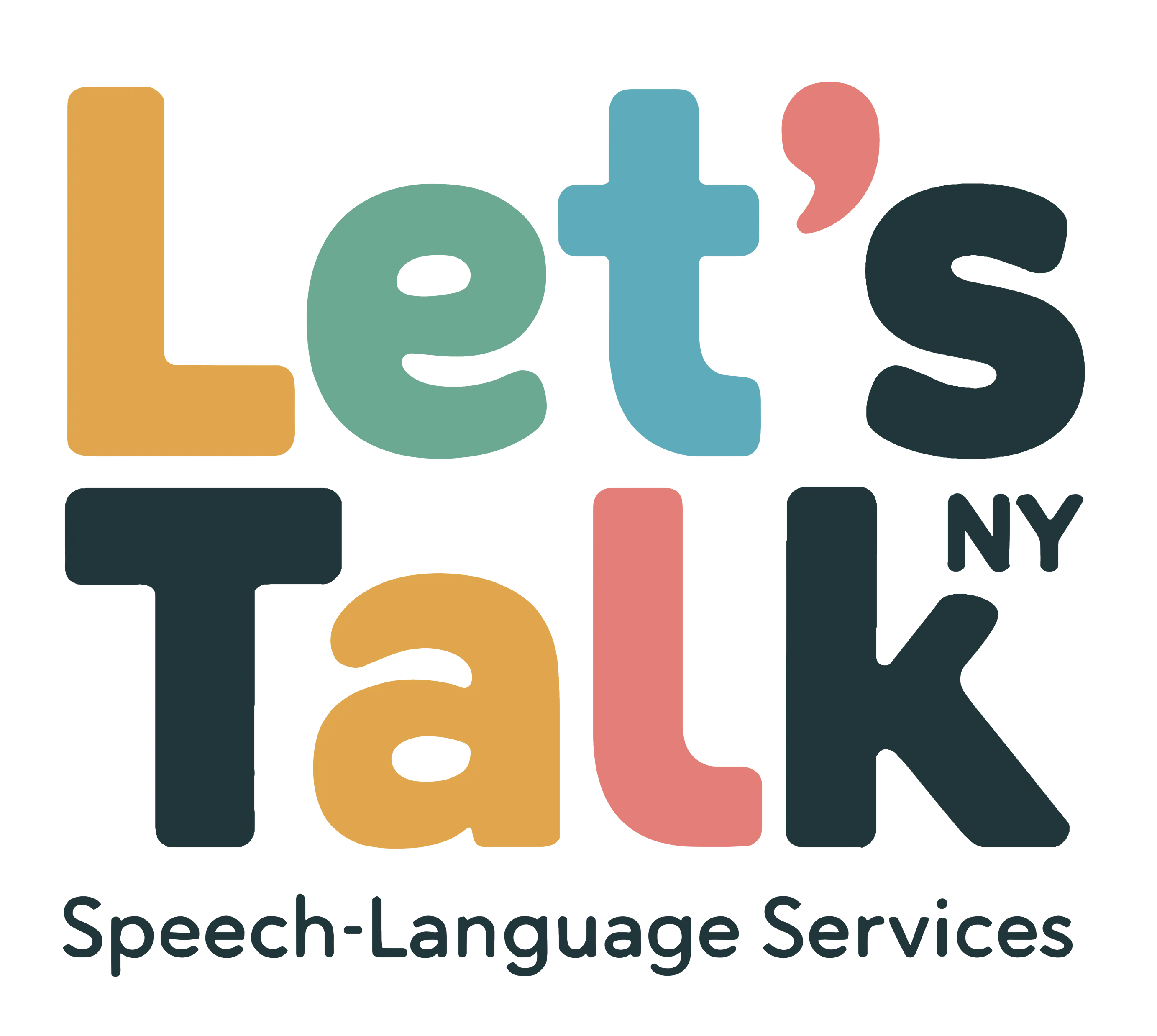Weekly Blog: Debunking AAC Myths – Is AAC a Last Resort?

Welcome back to our Let’s Talk NY weekly blog series on Augmentative and Alternative Communication (AAC) myths. Last week, I explored how AAC supports rather than hinders speech development. This week, I’m addressing another harmful misconception that often delays critical intervention.
This Week’s Myth: “AAC is the last resort in speech-language intervention”
I frequently hear from families who have been told to “try everything else first” before considering AAC. Speech-language professionals sometimes suggest that AAC should only be introduced after traditional speech therapy approaches have failed. This perspective can lead to missed opportunities and unnecessary delays in providing effective communication support.
What Research Tells Us:
The research directly contradicts this “last resort” approach:
-
AAC can be a first-line intervention
Romski and Sevcik (2005) emphasize that AAC can and should be implemented early in the intervention process, not as a last resort when other methods have failed.
-
Early communication success matters
Providing a reliable communication method early helps prevent learned helplessness and behavior challenges that often develop when children lack effective ways to express themselves.
-
AAC works alongside other interventions
AAC is not an either/or proposition—it can be implemented simultaneously with speech therapy and other communication approaches for comprehensive support.
What I’ve Observed in My Practice:
In my years working with children with complex communication needs, I’ve seen the consequences of delaying AAC implementation. Children who come to me after years of “speech-only” approaches often show signs of communication frustration, reduced social engagement, and limited language development.
Conversely, when I’ve been able to implement AAC strategies early in the intervention process, I typically observe:
- Reduction in frustration behaviors
- Increased engagement in therapy activities
- More consistent progress in overall communication development
- Development of language concepts that actually support speech attempts
One particular pattern I’ve noticed is that children who use AAC during therapy sessions often become more willing to attempt verbal approximations, possibly because the pressure to speak is reduced when they have a reliable backup communication method.
The Multi-Modal Approach:
Rather than viewing AAC as a last resort, I advocate for a multi-modal approach to communication intervention that may include:
- Traditional speech therapy techniques
- AAC strategies tailored to the individual’s needs
- Environmental modifications to support communication
- Partner training to recognize and respond to all communication attempts
This comprehensive approach ensures that the child has access to effective communication while continuing to develop all potential communication modalities.
Looking Ahead:
Next week, I’ll tackle another persistent myth: “Children must have certain skills before they can benefit from AAC.” We’ll explore why presuming competence and providing opportunities for communication is more important than waiting for prerequisite skills to emerge.
How I Can Support You:
If you’re considering communication options for your child, I can help you navigate the decision-making process with:
- Comprehensive communication assessments
- Evidence-based recommendations tailored to your child’s unique needs
- Implementation strategies that work in real-world settings
- Ongoing support as your child’s communication abilities evolve
Contact me today to learn more about how AAC might fit into your child’s communication journey—not as a last resort, but as a valuable tool in a comprehensive approach.
Reference
Romski, M. & Sevcik, R. A. PhD. Augmentative Communication and Early Intervention: Myths and Realities. Infants & Young Children 18(3):p 174-185, July 2005.
